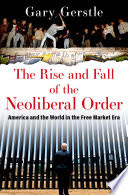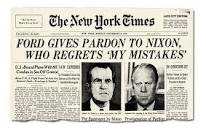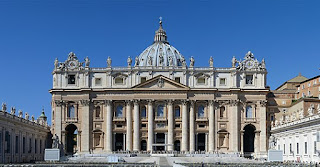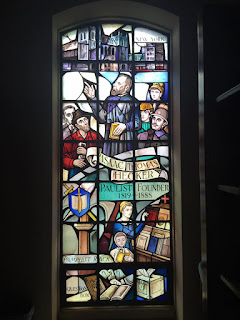Historian Gary Gerstle’s The Rise and Fall of the Neoliberal Order: American and the World in the Free Market Era (Oxford University Press, 2022) represents a sort of sequel to a much earlier work, The Rise and Fall of the New Deal Order, 1930-1980, ed. Steve Fraser and Gary Gerstle (Princeton University Press, 1990). The key concept connecting the two books and the periods they describe is that of « political order. » By this, the author means « a constellation of ideologies, policies, and constituencies that shape American politics in ways that endure beyond the two-, four-, and six-year election cycles. » In the last century, the U.S. has had orders: « the New Deal order that arose in the 1930s and 1940s, crested in the 1950s and 1960s, and fell in the 1970s; and the neoliberal order that arose in the 1970s and 1980s, crested in the 1990s and 2000s, and fell in the 2010s. » Characteristic of each order is its « distinctive program of political economy. » The New Deal order was about managing capitalism in the public interest. The Neoliberal Order has been about dismantling all of that.
Gerstle emphasizes how each political order brings the opposition party along: « the success of a political order depends on its proficiency in shaping what broad majorities of elected officials and voters on both sides of the partisan divide regard as politically possible and desirable. By the same token, losing the capacity to exercise ideological hegemony signals a political order’s decline. »
The author begins this sequel by recalling the by-now familiar story of the rise of the new Deal Order in the 1930s and 1940s and how it collapsed in the 1960s and 1970s, battered by racial conflicts, the Vietnam War, and domestic economic decline. (The New Deal coalition that reigned supreme from the mid 1930s through the mid 1960s famously included core constituencies like southern white voters and the northern white working class that defected almost en masse in the 1960s and 1970s.) Almost as an aside, he notes the New Deal order’s avoidance of engagement with religion. This was partly strategic, given the need to keep both Northern Catholics and Southern Protestants in the same Democratic party coalition. But it also reflected a belief in the superiority of secular government, wherein « religion was best left to the private realm and individual choice. »
If the new Deal Order was itself a reform of liberalism in one direction, an even more radical reform in another direction was on its way. The author highlights how the neoliberal reaction remained relatively marginal until the 1970s. « All that began to change across the 1970s, as the long economic recession generated frustration and fear. » Then, an ascending neoliberal architecture of « Money, votes, policies, jurisprudence, media influence, and a strong moral stance, » all « came together under the presidency of Ronald Reagan, « whose « greatest political achievement was to reconcile a politics focused on restoring white supremacy and godliness with his own neoliberal market orientation, with its emphasis on personal freedom and antagonism to the New Deal state. » And the post-Reagan collapse of Soviet communism, besides opening a large new area to capitalist penetration, also « removed what remained in America of the imperative for class compromise. » Communism’s collapse also « shrank the imaginative and ideological space in which opposition to capitalist thought and practices might incubate, and impelled those who remained leftists to redefine their radicalism in alternative terms, which turned out to be those that capitalist systems could more, rather than less, easily manage. This was the moment when neoliberalism in the United States went from being a political movement to a political order. »
If the true test of a political order is when the opposition acquiesces to the new order’s ideological and policy imperatives, somewhat as Eisenhower had done with the New Deal, Bill Clinton « became the Democratic Eisenhower, America’s neoliberal president par excellence. » As many of us who lived through that era may now remember with some regret, Clinton promoted the globalization of manufacturing and the deregulation of banking and telecommunication, and oversaw a wholesale remodeling of the American economy from an industrial economy with an upward-mobile working class to an upper-class oriented new economy of high tech and high finance.
But the neoliberal order contained the seed of its own destruction. « The distress and economic dislocation caused by the Great Recession of 2008–2009 came on the heels of decades of deepening economic inequality between those benefiting from the global orientation of the neoliberal order and those who were not. » The author traces the development, especially in the aftermath of the Great Recession of such varied opposition movements as the Tea Party, Occupy Wall Street, and Black Lives Matter. He also highlights the unique development of precariat labor during this period, and perhaps most significantly the prime political beneficiary of all that, Donald Trump. « In each of Trump’s three beliefs—that free trade and open borders were harming America, that America should privilege its people of European descent, and that America’s true strength lay in its professional wrestling heartland far more than in the aspirations of America’s coastal elites—we can see an incipient attack on America’s neoliberal order. »
That neoliberal order having lost credibility, « disorder and dysfunction » now reign.
What comes next?




